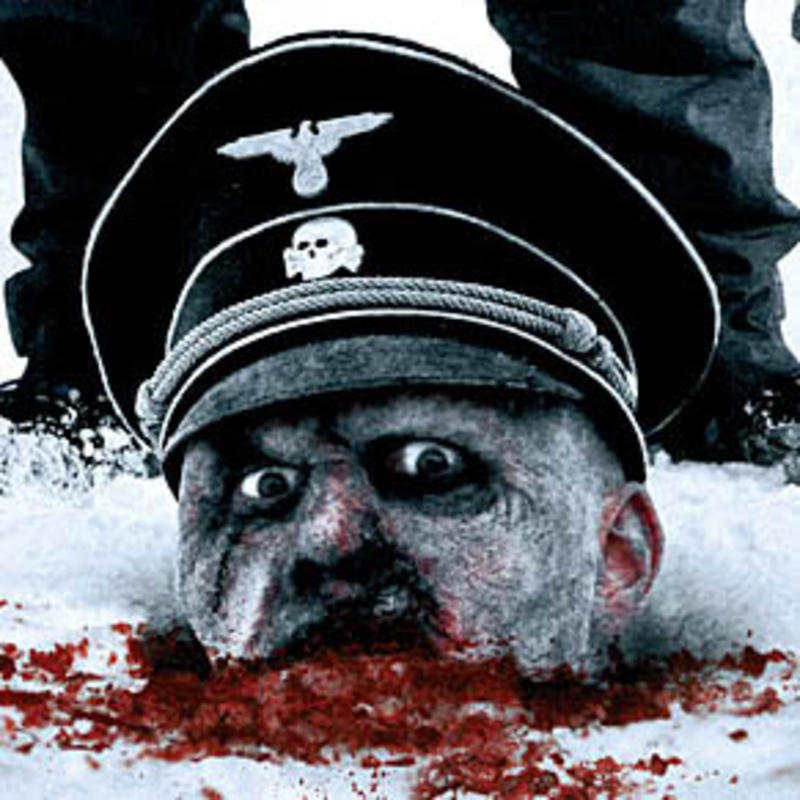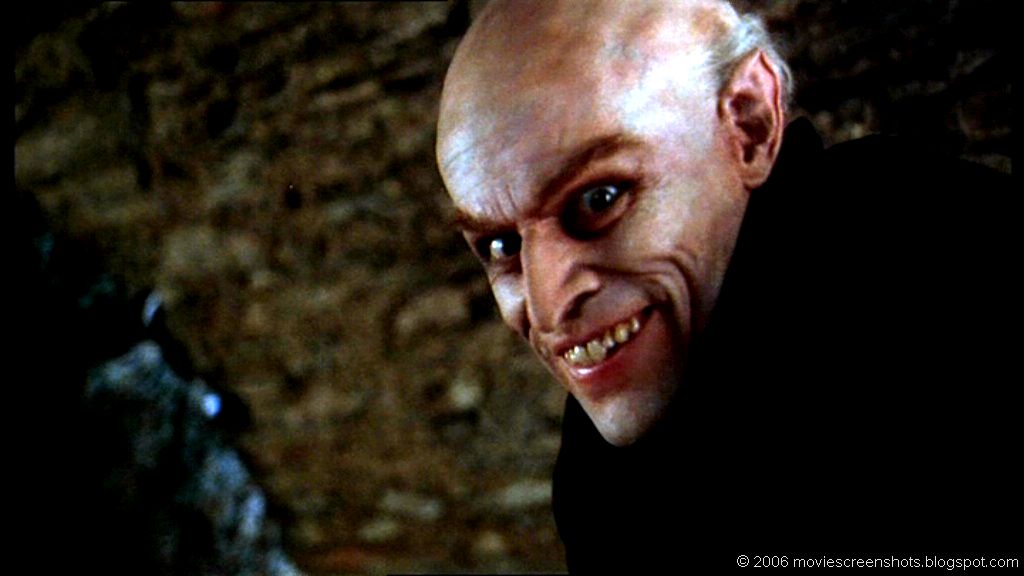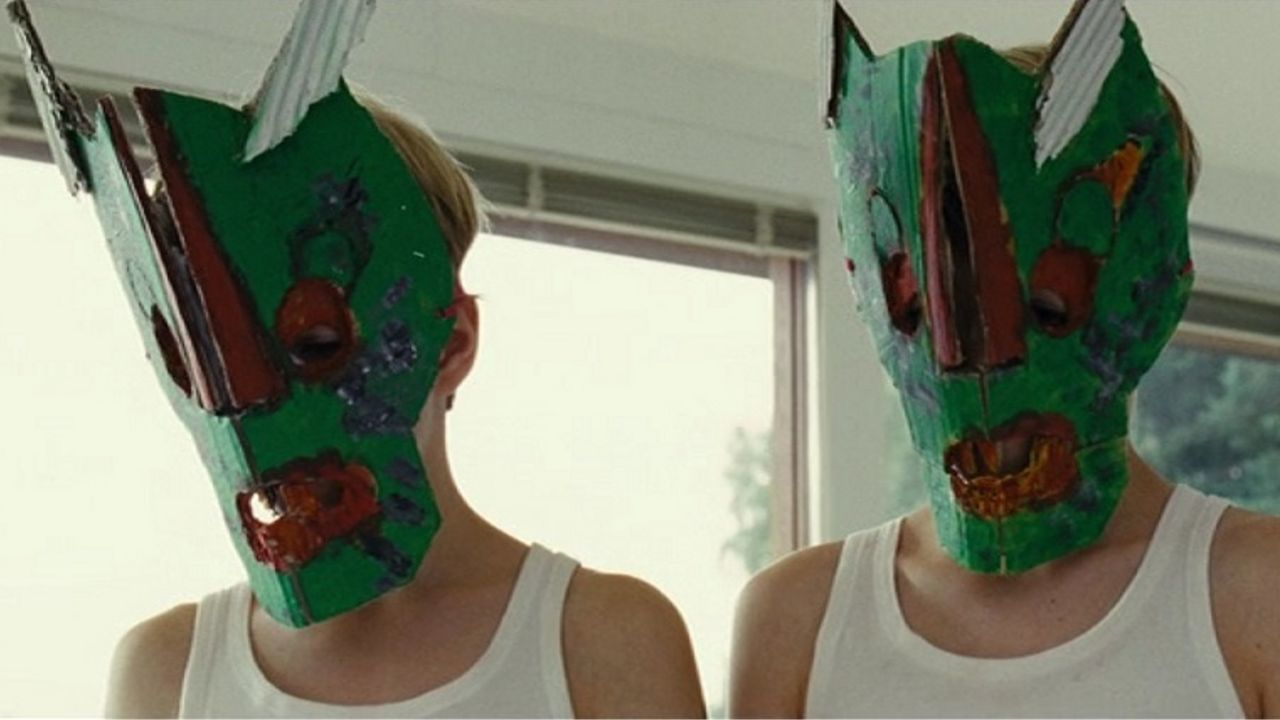Horror is built, in large part, on the concept of the underestimated woman. What else is a final girl? But the label doesn’t just fit the bloody survivor. There are other women you don’t want to sell short. Mrs. Voorhees, anyone? How about Carrie White? Overlook these chicks at your own peril.
Who are the women of horror you should absolutely not, for any reason, underestimate?
5. May (2002)
Lucky McKee’s 2002 breakout is a showcase for his own talent as both writer and director, as well as his gift for casting. The entire ensemble surprises with individualized, fully realized, flawed but lovable characters, and McKee’s pacing allows each of his talented performers the room to breathe, grow, get to know each other, and develop a rapport.
More than anything, though, May is a gift from Angela Bettis to you.
As the title character, Bettis inhabits this painfully gawky, socially awkward wallflower with utter perfection. McKee’s screenplay is as darkly funny as it is genuinely touching, and we’re given the opportunity to care about the characters: fragile May, laid back love interest Adam (a faultless Jeremy Sisto), hot and horny Polly (a wonderful Anna Faris).
McKee’s film pulls no punches, mining awkward moments until they’re almost unendurable and spilling plenty of blood when the time is right. He deftly leads us from the sunny “anything could happen” first act through a darker, edgier coming of age middle, and finally to a carnage laden climax that feels sad, satisfying, and somehow inevitable.
4. The Loved Ones (2009)
Aussie teen Lola (a gloriously wrong-minded Robin McLeavy) asks Brent (Xavier Samuel) to the school dance. He politely declines, which proves to be probably a poor decision.
Writer/director Sean Byrne quietly crafts an atmosphere of loss and depression in and around the school without painting the troubles cleanly. This slow reveal pulls the tale together and elevates it above a simple work of outrageous violence.
Inside Lola’s house, the mood is decidedly different. Here, we’re privy to the weirdest, darkest image of a spoiled princess and her daddy. The daddy/daughter bonding over power tool related tasks is – well – I’m not sure touching is the right word for it.
The Loved Ones is a cleverly written, unique piece of filmmaking that benefits from McLeavy’s inspired performance as much as it does its filmmaker’s sly handling of subject matter. It’s a wild, violent, depraved way to spend 84 minutes. You should do so now.
3. Audition (1999)
Audition is a phenomenally creepy May/December romance gone very, very wrong.
A widower holds mock television auditions as a way of finding a suitable new mate. He is repaid for his deception.
Nearly unwatchable and yet too compelling to turn away from, Audition is a remarkable piece of genre filmmaking. The slow moving picture builds anticipation, then dread, then full-on horror.
Midway through, Miike punctuates the film with one of the most effective startles in modern horror, and then picks up the pace, building grisly momentum toward a perversely uncomfortable climax.
By the time Audition hits its ghastly conclusion, Miike and his exquisitely terrifying antagonist (Eihi Shina) have wrung the audience dry. She will not be the ideal stepmother.
Keep an eye on the burlap sack.
2. You’re Next (2011)
We’ve put this movie down now and again – mainly because it didn’t quite live up to expectations on first viewing. But there is one thing you can absolutely say for You’re Next – no one saw Erin (Sharni Vinson) coming.
Adam Wingard’s film – written by frequent collaborator Simon Barrett – crashes the anniversary of a snipey, bitchy family, celebrating at their isolated, ostentatious country place.
When masked marauders start picking off family members, party plus-one Erin shows off some skills. Level headed, calm, savvy and badass to the bone, she always knows what to do, how to do it, where to nail it, and the most vulnerable spot to land a punch.
No one knew what she had in store for them.
1. The Woman (2011)
There’s something not quite right about Chris Cleek (an unsettlingly cherubic Sean Bridgers), and his family’s uber-wholesomeness is clearly suspect. This becomes evident once Chris hunts down a feral woman (an awesome Pollyanna McIntosh), chains her, and invites the family to help him “civilize” her.
The film rethinks family – well, patriarchy, anyway. Notorious horror novelist and co-scriptor Jack Ketchum may say things you don’t want to hear, but he says them well. And director Lucky McKee – in his most surefooted film to date – has no qualms about showing you things you don’t want to see.
McIntosh never veers from being intimidating, terrifying even when she’s chained. Though she speaks nary a word of dialog, she’s the most commanding presence on the screen. And though Chris Cleek may not yet realize it, the true Alpha is never really in doubt.









